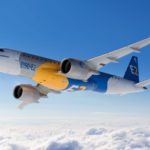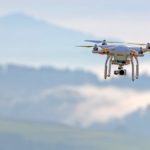Airbus, in cooperation with IBM, is developing CIMON (Crew Interactive MObile CompanioN), an AI-based assistant for astronauts for the DLR Space Administration.
The technology demonstrator, which is the size of a medicine ball and weighs around 5 kg, will be tested on the ISS by astronaut Alexander Gerst during the European Space Agency’s Horizons mission between June and October 2018.
A 3D-printed ‘flying brain’
“In short, CIMON will be the first AI-based mission and flight assistance system,” said Manfred Jaumann, Head of Microgravity Payloads from Airbus. “We are the first company in Europe to carry a free flyer, a kind of flying brain, to the ISS and to develop artificial intelligence for the crew on board the space station.”
CIMON is made of plastic and metal, and was created created using 3D printing. It is designed to support astronauts in performing routine work, for example by displaying procedures or – using its ‘neural’ AI network – offering solutions to problems.
It uses Watson AI technology from the IBM cloud. A statement from Airbus says that “with its face, voice and artificial intelligence, [CIMON] becomes a genuine ‘colleague’ on board.”
Bringing CIMON to life
Airbus initially examined the concept for the assistance system as part of a self-financed study. Then, in August 2016, the Bonn-based DLR Space Administration commissioned Airbus’ aerospace experts to carry out the project. Since then, a 50-strong project team comprising members from Airbus, DLR, IBM and the Ludwig-Maximilians-Universität Munich (LMU) has been working on CIMON. The system is now learning to orientate itself and move around and, as it accumulates knowledge through IBM’s Watson AI technology, it is training to recognise its human colleagues.
Amongst other things, the Watson AI was trained using voice samples and photos of Alexander Gerst, and procedures and plans of the Columbus module of the International Space Station were loaded into the database. Alexander Gerst also had a say in the selection of CIMON’s screen face and computer voice with the aim that he, too, could ‘make friends’ with his electronic colleague.
Once the functional testing of the system has been completed, Gerst will work in space with CIMON a total of three times: They will experiment with crystals, work together to solve the Rubik’s cube and perform a complex medical experiment using CIMON as an ‘intelligent’ flying camera.
Man meets machine
In its first Space mission, CIMON will only be equipped with a selected range of capabilities. In the medium term, aerospace researchers also plan to use the CIMON project to examine group effects that can develop over a long period of time in small teams and that may arise during long-term missions to the Moon or Mars.
Social interaction between people and machines, and between astronauts and assistance systems equipped with artificial ’emotional intelligence’, could play an important role in the success of long-term missions. Airbus’ developers say they are convinced too that, here on Earth, developments of the assistance system could also find future use in hospitals and social care.
CIMON will get its first taste of space as early as March 2018: the 31st DLR parabolic flight campaign will focus in particular on testing and optimising GNC algorithms (Guidance, Navigation and Control) under zero G conditions.

